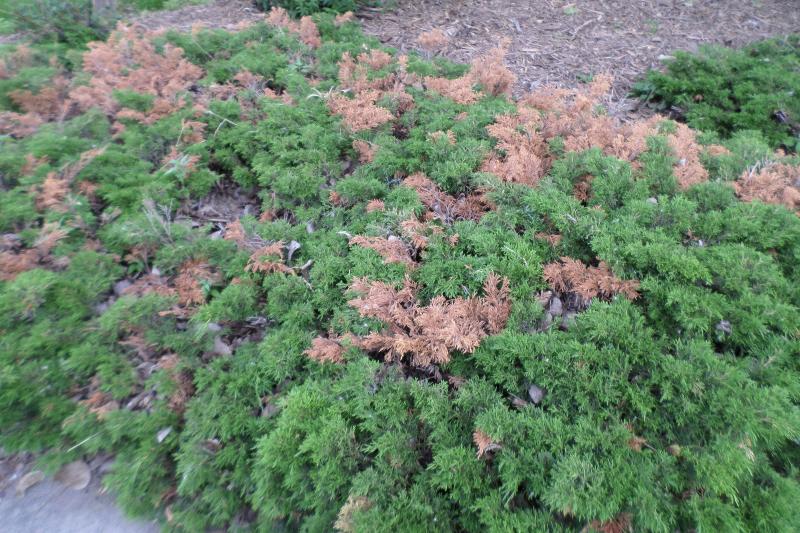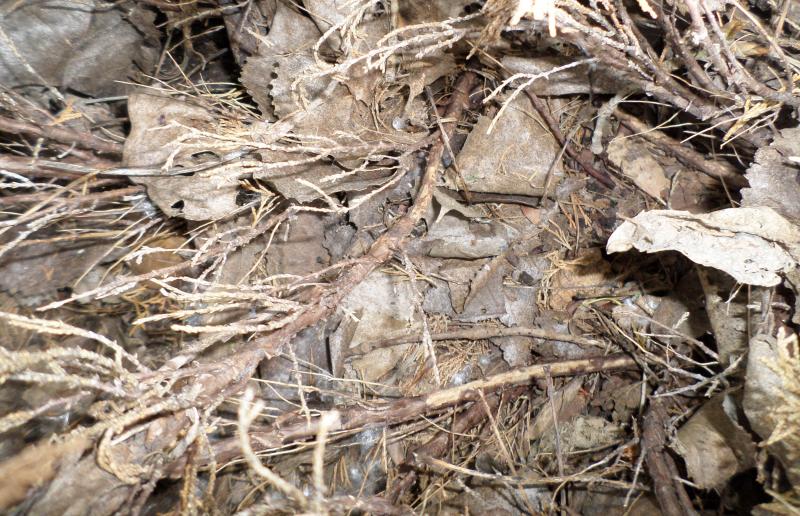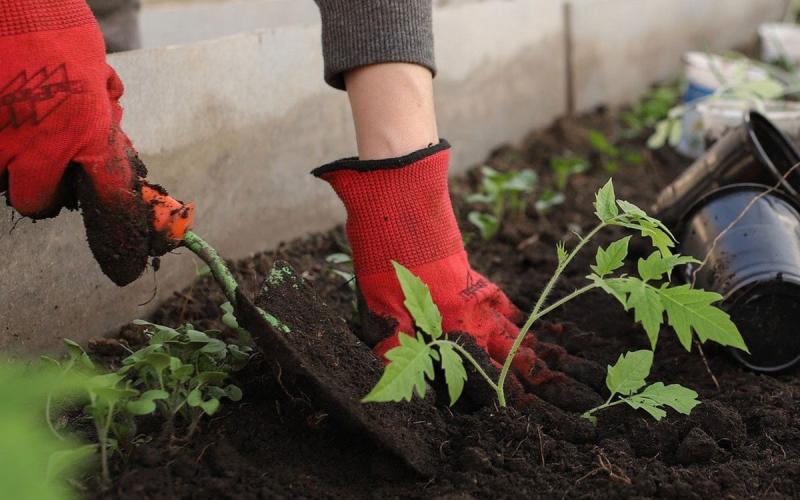
We are seeing a tremendous amount of vole damage on junipers and other small trees. Almost every common juniper in the Black Hills has damage.
These juniper are covered with yellowing and browning shoot tips. If you follow each of these yellowing shoots to the soil line you will also find that these shoots have been girdled by voles.
What to Look For

Vole injury can be easily separated from rabbits by the gnaw marks. The gnaw marks from voles are irregular and at various angles, quite different from rabbits, which tend to cut everything off at a very regular angle, almost 45-degrees. Voles can become a problem with cedar (juniper) plantings as these evergreen plants provide good hiding cover for them. Voles also take advantage of the protective cover from weed barrier fabric and populations tend to increase in ornamental plantings and tree belts with fabric. Tall grass between rows also provides hiding cover and mowing low, particularly in the fall, is a common means to reduce movement of voles from row to row.
Management Strategies
The best management tactic for voles in small plantings is to trap them out. Mouse traps with peanut butter can be used. For larger plantings, such as windbreaks, vole populations can be reduced with toxic baits. The baits are placed in bait stations to reduce the risk to non-targeted animals. Also placing baits in holes, rather than stations, is time consuming and voles are very sensitive to disturbances in their tunnels and may avoid the baits. Toxic baits are generally on the restricted pesticide list but some are available under general use. Baits are most effective when used in early spring when other food sources are limited. Baits must be frequently check and replenished as it often takes several feedings to kill. Some baits also have a bitter flavor so it’s best to increase the attraction to the stations with a few days of placing oats or other grains to get the voles used to come to the stations for food. There are also vole repellents but these provide only short-term protection.


